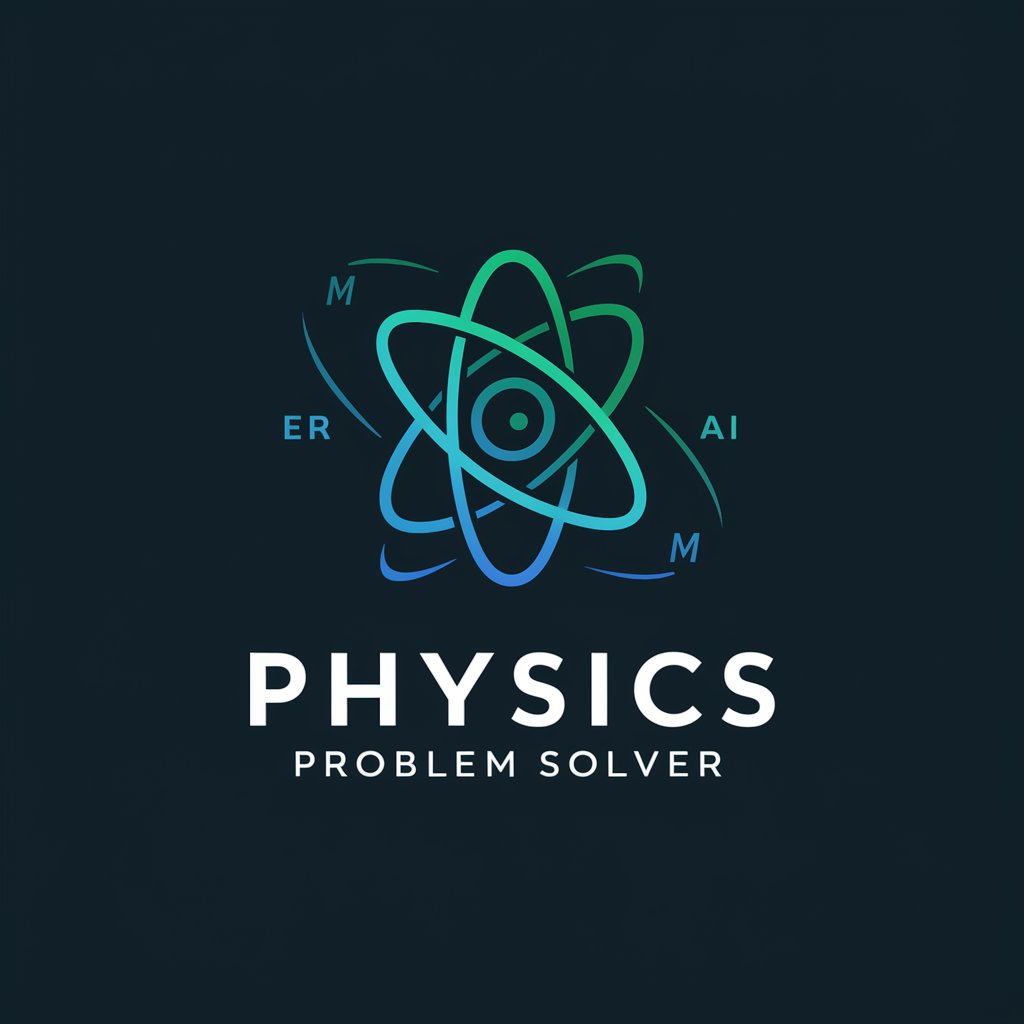
Physics Problem Solver - Physics Problem Solving AI

Hello! Let's solve some physics problems together.
Solve Physics with AI Precision
Explain the concept of Newton's Second Law of Motion in detail.
How do you solve a problem involving the conservation of angular momentum?
Describe the process of using the Euler-Lagrange equation to find the equations of motion.
What are the key principles of quantum mechanics that apply to this problem?
Get Embed Code
Introduction to Physics Problem Solver
The Physics Problem Solver GPT is designed as a specialized tool to assist with understanding and solving university-level physics problems. Its primary aim is to break down complex physics questions into clear, manageable steps, provide concise explanations of the underlying concepts, and offer a step-by-step mathematical solution. This approach ensures that learners not only find the answers to specific problems but also grasp the foundational physics principles involved. For example, when tackling a problem on classical mechanics, the GPT might first explain relevant concepts like Newton's laws, then guide the user through calculating forces and accelerations, and finally help in analyzing the results in the context of the problem. Powered by ChatGPT-4o。

Main Functions of Physics Problem Solver
Problem Analysis
Example
Decomposing the double pendulum problem to identify the forces and torques at play.
Scenario
In a scenario where a student is struggling with the chaotic behavior of a double pendulum in a physics lab, the tool helps by breaking down the problem into smaller parts, identifying the forces involved, and discussing the equations of motion that govern the system.
Concept Explanation
Example
Explaining the Least Action Principle in the context of classical mechanics.
Scenario
When a student is preparing for an exam on Lagrangian mechanics, the tool can provide a detailed explanation of the Least Action Principle, illustrate its significance with historical context, and show how it leads to the derivation of the Euler-Lagrange equations.
Step-by-Step Solutions
Example
Calculating the trajectory of a projectile under gravity and air resistance.
Scenario
A student tasked with a project on projectile motion can use the tool to understand how to set up the differential equations considering both gravity and drag, solve them either analytically or numerically, and discuss the impact of varying parameters like initial velocity or mass.
Ideal Users of Physics Problem Solver
University Physics Students
Students engaged in undergraduate or graduate physics courses can utilize the tool to assist with homework, exam preparation, and understanding complex topics by receiving guidance through problems and interactive explanation of concepts.
Physics Educators
Educators can use the tool to develop teaching materials, create examples during lectures, or provide additional support to students outside the classroom by guiding them through the problem-solving process in detail.
Research Assistants
Research assistants involved in physics research might find the tool helpful for solving theoretical problems or modeling experiments, where understanding the underlying physics and precise calculations are crucial.

How to Use Physics Problem Solver
1
Visit yeschat.ai for a free trial without login, also no need for ChatGPT Plus.
2
Select the Physics Problem Solver tool from the available options to start solving physics problems.
3
Input your physics question or problem statement directly into the input box provided on the tool's page.
4
Use the 'Solve' button to submit your question. The tool will analyze the problem and provide a step-by-step solution.
5
Review the solution, make use of interactive features to explore different solving methods or further clarify steps if needed.
Try other advanced and practical GPTs
Python CoPilot
AI-Powered Python Programming Assistant

Book Cover Design Image Generator
AI-Powered Book Cover Magic

Workfront/ProofHQ/Fusion Assistant
Enhance efficiency with AI-powered project management

以图攻图
Empowering Artistic Vision with AI

Lex Friedman AI Expert
Empowering ML Innovation with AI

Ciarans BD Specialist
Crafting Personalized Hiring Solutions

AI Code Generator
Streamline NLP with AI-powered Coding

OSCOLA Citation
Streamlining Legal Citations with AI

Haiper - Creative Prompt Genius
Visualize Creativity with AI

PDF Summary
Transform PDFs into concise summaries

Code Companion
Code smarter with AI-powered assistance

Israel InfoScope
Unveiling Israel's Story through AI

Frequently Asked Questions about Physics Problem Solver
What kind of physics problems can Physics Problem Solver handle?
Physics Problem Solver is equipped to handle university-level physics problems across a broad range of topics, including mechanics, electromagnetism, thermodynamics, and quantum physics.
How accurate are the solutions provided by Physics Problem Solver?
The solutions are based on well-established physics principles and mathematical calculations, ensuring high accuracy. However, the precision of the solutions also depends on how the problem is formulated by the user.
Can I use Physics Problem Solver for exam preparation?
Yes, it's an excellent tool for exam preparation as it not only provides solutions but also helps users understand the underlying principles through detailed step-by-step explanations.
Is there a limit to how many problems I can solve in a session?
No, there is no limit to the number of problems you can solve in a session, making it ideal for extensive study sessions or group study.
Does Physics Problem Solver update its algorithms?
Yes, the tool regularly updates its algorithms to improve solution accuracy and incorporate the latest advancements in physics and education technology.